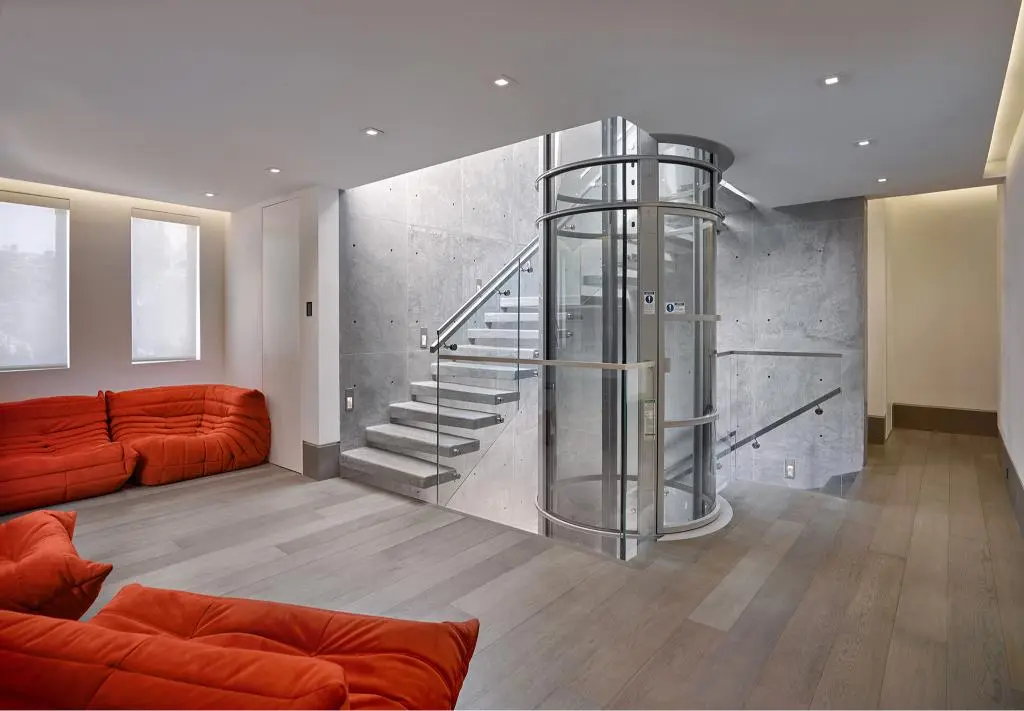A home elevator is a residential lift designed to help people move easily between floors within their house. It is typically installed to improve accessibility for individuals with mobility issues, enhance convenience, or add a luxury feature to a home. Unlike commercial elevators, home elevators are smaller in size, have lower weight capacities, and also are built to fit into residential spaces with specific design requirements.
Types of Home Elevators
There are several types of home elevators, each functioning differently depending on their drive mechanism. Understanding how they work can help you determine the best option for your home.
1. Hydraulic Elevators
Hydraulic elevators operate by pushing a piston up and also down through a hydraulic fluid. The elevator car moves as the piston raises or lowers within a cylinder. These elevators are powered by a pump, which forces the hydraulic fluid into the cylinder to push the piston, thus lifting the car. When the elevator is descending, a valve releases the hydraulic fluid, allowing the car to lower smoothly.
- How it works: Uses a piston and hydraulic fluid to lift the elevator car.
- Key features: Quiet operation, smooth ride, can carry heavier loads.
2. Traction Elevators
Traction elevators use ropes or cables and a counterweight system to move the car up and down. The car is attached to a pulley system, where the cables pass over a large wheel and are connected to counterweights. As the motor turns the wheel, the car is either raised or lowered by pulling the cables.
- How it works: Motor-driven cables pull the car and also balance it with counterweights.
- Key features: Energy-efficient, doesn’t require a machine room.
3. Vacuum (Pneumatic) Elevators
Vacuum elevators work through air pressure. The car moves inside a vertical cylindrical shaft by creating differences in air pressure. The air is sucked out from above the elevator car, causing the car to rise, and also when the pressure is released, the car gently descends.
- How it works: Air pressure differences push or pull the elevator car.
- Key features: Modern, space-saving design, easy to install.
4. Shaftless Elevators
Shaftless elevators are typically used for short-distance travel between two floors. These elevators do not require a full shaft and also are more compact, making them easier to install in homes where space is limited. They usually move along a rail attached to the wall or structure.
- How it works: Moves along a track or rail without needing a shaft.
- Key features: Minimal space requirements, often more affordable.
Basic Components of a Home Elevator
Despite the variety of elevator types, they all share several basic components:
- Cabin (Car): The enclosure where passengers or items are transported.
- Control System: The mechanism that allows the user to operate the elevator, usually a panel with buttons to select floors.
- Drive System: This is the mechanical system that powers the movement of the elevator, such as the hydraulic piston or traction cables.
- Shaft (for most elevators): The vertical passage through which the elevator moves.
- Counterweights (for traction elevators): Balance the weight of the elevator to reduce the load on the motor.
- Safety Devices: Features like emergency stop buttons, door sensors, and also battery backup for power outages.
How Does a Home Elevator Work?
The functioning of a home elevator largely depends on the type of system installed, but the basic process follows these steps:
- Initiation: The elevator is called by pressing a button at a particular floor. The control system registers the request and also sends the car to the designated floor.
- Lifting/Lowering:
- For hydraulic elevators, the pump pushes fluid into the cylinder to raise the piston, lifting the car. To descend, the valve releases fluid, and gravity lowers the car.
- In traction elevators, the motor turns the pulley, moving the cables and also counterweights to lift or lower the car.
- For vacuum elevators, air is extracted from the top of the shaft, creating lower pressure that lifts the car. When descending, air is allowed back into the shaft, lowering the car.
- Stopping at the Desired Floor: As the car reaches the desired floor, the control system slows it down for a smooth stop. Sensors or switches detect the car’s position and also align it with the floor level.
- Door Operation: The elevator doors (either automatic or manual) open once the car has come to a stop. Safety sensors ensure the doors don’t close if something is obstructing the path.
Conclusion
Home elevators are efficient, space-saving devices that provide added convenience and accessibility to multi-story homes. Whether powered by hydraulics, cables, or air pressure, each system operates based on a reliable mechanism designed to ensure smooth and safe travel between floors. By understanding the different types of elevators and how they work, you can make an informed decision about which elevator best suits your home’s needs and also your personal preferences.
Choosing the best home elevator involves balancing functionality, aesthetics, space constraints, and budget. Taking the time to research your options and understand the pros and cons of each type will help you make the best decision for your home and lifestyle.
Quick Recap of Key Considerations:
- Assess your specific needs and also reason for installing a home elevator.
- Understand the different types of elevators and their mechanical requirements.
- Factor in safety features and ensure compliance with local codes.
- Consider the size, weight capacity, and also space needed for installation.
- Budget appropriately, factoring in installation, maintenance, and also customization costs.
- Review warranties and ongoing maintenance agreements for long-term peace of mind.
With careful planning, the right home elevator can add convenience, value, and a touch of elegance to your home.







